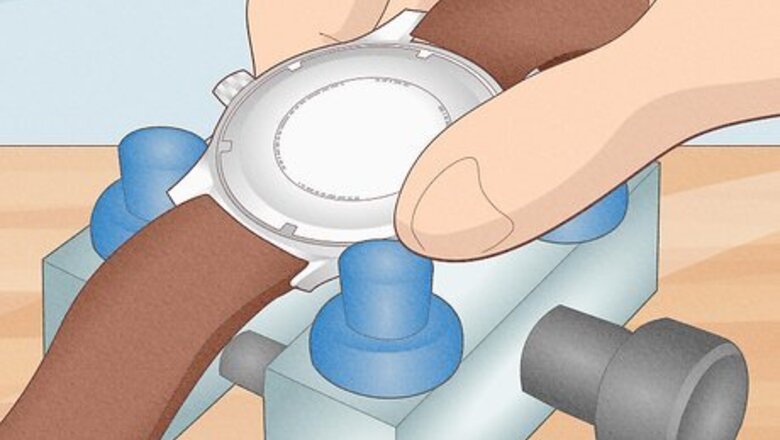
views
Using a Watch Case Wrench
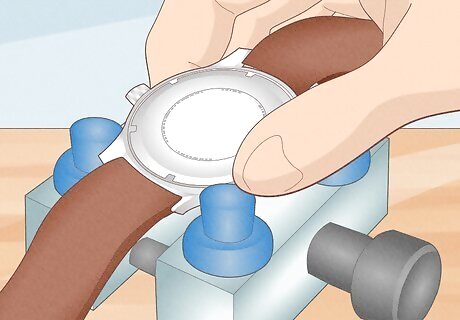
Place your watch face-down in a watch case holder. First, undo the clasp on the wrist band to get it out of the way. Then, turn the watch so that the dial is facing your work surface and insert it into the opening at the center of the case holder. Make sure the watch is resting nice and flat before you continue. A watch case holder is a device that allows a wristwatch to be mounted in a fixed position while the user performs basic repair tasks. Most watch case holders feature an adjustable one-size-fits-all assembly, so they'll work with any model of watch, and generally retail for around $20. If the watch doesn’t seem to want to fit, try turning the dial on the side of the case holder counterclockwise to open it a bit wider.Tip: For maximum security, clamp the case holder into a shop vice to prevent it from sliding around while you work.
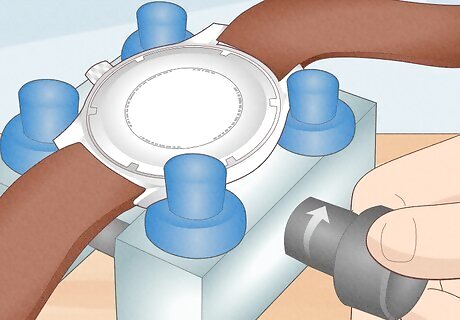
Turn the dial on the case holder clockwise to secure the watch. Rotating the dial will cause the two pairs of nylon or rubber securing pins to move closer to one another. Keep tightening the pins until you begin to encounter resistance. They should grip the edges of the case snugly. If you’re worried about scratching your watch’s casing, drape a cleaning cloth or soft handkerchief over the pins on the case holder to provide an extra buffer between the pins and the watch itself. To test whether the case holder is locked on tight enough, pick it up and tilt it so that the watch is hovering vertically. If it doesn't budge, you're in business.
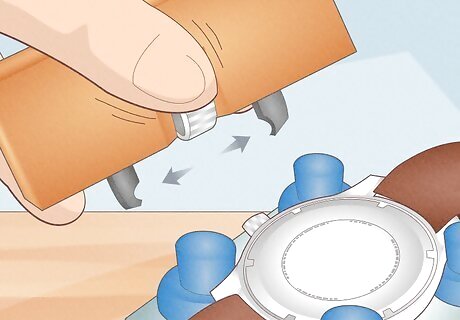
Open the tips of your watch case wrench wider than the back of the watch. Basic watch case wrenches have a small thumbscrew in the middle that make it possible to adjust the tips as needed to fit various watch models. To move the tips farther apart, simply twist the thumbscrew to the left. You can pick up a watch case wrench for around $8-10 online or at any store that specializes in watches and watch accessories. It can be a handy tool to have around if you prefer to tackle maintenance and repair projects yourself. If you’re using a professional-grade Jaxa style wrench, you’ll need to fit it with three individual “chucks,” or gripping tips, that are the right size and shape for the model you’re operating on.
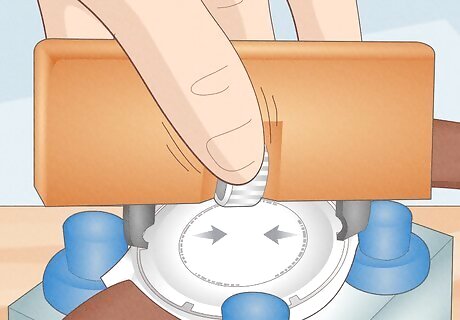
Narrow the tips of the wrench until they fit into the notches on the casing. Insert the first tip into one of the notches on the watch's backside. Then, tighten the thumbscrew slowly to align the second tip with the opposing notch. Make sure that both tips fit squarely into their respective notches. If you don’t see any notches on the back of your watch’s casing, there’s a chance that it may not be a screw back at all. In this case, you’ll need to either use a friction ball to get it started or try out a different type of tool entirely, such as a die or miniature pry lever.
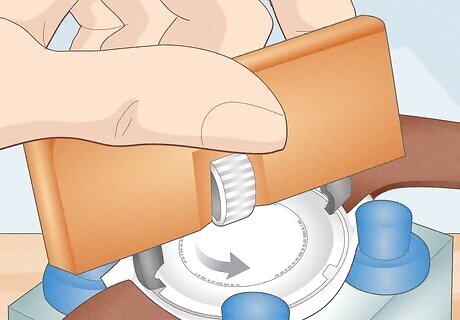
Twist the wrench counterclockwise to loosen the case backing. Push down lightly on the wrench while at the same time rotating it to the left. As soon as you feel the backing piece begin to turn freely, stop, set your wrench aside, and finish unscrewing it with a friction ball or your fingertips. Be as delicate as possible here. If you use too much force, you could leave behind unsightly scratches or gouges in the casing, or even do more serious damage to the backing piece. When you’re ready to reassemble your watch, simply replace the backing piece and screw it on partially by hand before tightening it down with your wrench. Richard E. Gilbert, Horologist To open a screw-back watch case, first inspect the notches along the caseback to locate the slots for your case wrench tips. Apply gentle but firm pressure with your wrench, using a clockwise motion, while stabilizing the watch in a holder. Once loose, carefully unscrew the back by hand. Take care not to scratch the case or damage any gaskets.
Getting in with Other Tools
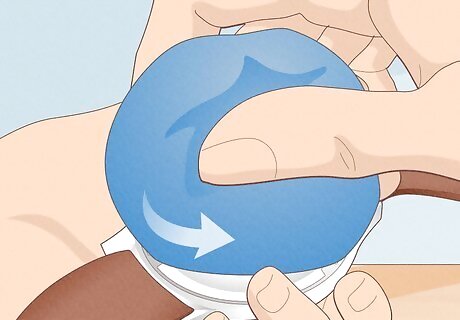
Buy a cheap friction ball to minimize the risk of scratches and scrapes. A friction ball is a small inflatable sphere of tacky rubber that serves as a gentler alternative to hard metal openers like wrenches and dies. To open a screw back watch with a friction ball, hold the watch face-down in one hand, press the ball firmly into the backing piece, and turning it counterclockwise. A friction ball will only run you $5-10 online or at a specialty watch retailer, making the device as economical as it is effective. You may be able to get away with using another kind of small, grippy ball, such as a stress ball or bouncy ball, if the back of your watch is screwed on rather loosely.Tip: One of these tools is a must if your goal is to keep your watch in pristine condition for as long as possible.
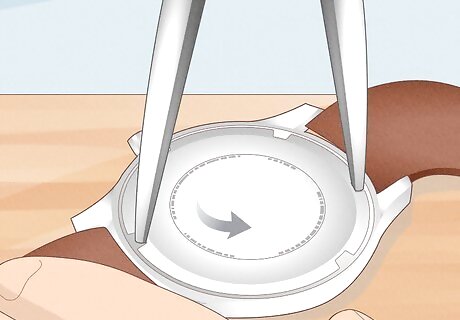
Use a pair of needle-nose pliers to undo case backings with notches. Grip the watch face-down in one hand, or set it on a stable surface and use your free hand to steady it. Open the jaws of the pliers wide enough to nestle them in the notches on the watch's backside. Squeeze the handles gently and apply steady pressure to the back of the watch case as you turn the pliers counterclockwise. While you may be able to find another type of pliers that fit into the notches on your screw back watch, the slender, narrow, rounded jaws of needle-nose pliers makes them perfectly suited for this purpose. A flexible cutting mat can make an ideal work surface for tinkering with fragile items like watches. If you don't feel like dropping money on any extra accessories, a folded towel will also protect your watch from unnecessary wear and tear.
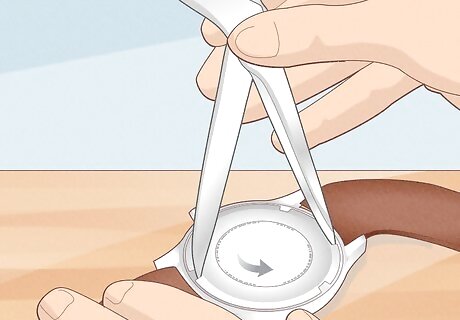
Unscrew your watch with scissors if you don’t have anything else on hand. If possible, find a pair of scissors with blunt tips that won’t scar your watch’s casing too badly if they happen to slip. With the watch nestled securely in one hand, wedge the tips of the scissor blades into a set of opposing notches and twist the handles slowly to loosen the backing piece to the point where you can finish unscrewing it by hand. To avoid accident or injury, do your best to keep the fingers of the hand you’re using to hold the watch out of the way. Generally speaking, watches and scissors are a bad mix. If you have no other way of getting the back off of your watch, however, it may be your only option. Scissors may also have to suffice if you don’t have a pair of pliers that opens wide enough to get into the notches on the case back.















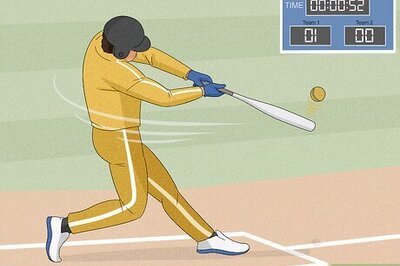


Comments
0 comment